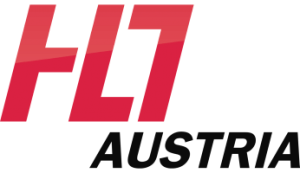
HL7® Austria FHIR® Core Implementation Guide
1.1.0 - STU2

HL7® Austria FHIR® Core Implementation Guide
1.1.0 - STU2
HL7® Austria FHIR® Core Implementation Guide - Local Development build (v1.1.0) built by the FHIR (HL7® FHIR® Standard) Build Tools. See the Directory of published versions
This is the implementation guide for the Core Profiles (v1.1.0: STU 2) based on HL7® FHIR® R5. It is a ballot implementation guide that is hosted on the HL7® Austria github project. The most recent version of this implementation guide can be found at the HL7® Austria FHIR® Website.
This implementation guide is provided to support the use of FHIR® in Austria.
This guide is a working specification. We anticipate that it will be implemented and tested by FHIR® system producers whose feedback will help improve its content. With this standard for trial use, we are looking for feedback on whether the following goals have been met:
The HL7® Austria FHIR® Core Implementation Guide (IG) covers administrative resources, like Patient, Organization, Practitioner, etc. that can be used on their own with no specific functional requirements for usage or they can be used for other more functional FHIR® IGs in Austria via dependencies. It contains only those Profiles and Extension where adaptions for Austria are necessary.
Download: You can download this implementation guide in NPM format from here.
Currently, the Austrian EHR system (ELGA) is mainly based on HL7® CDA®. In order to enable the creation of FHIR® resources that have a similar data structure this Implementation Guide provides mappings to the CDA® based implementation guides (e.g. Mappings for Allgemeiner Implementierungsleitfaden v3). Furthermore ELGA is using the HL7® Austria FHIR® Core IG as a basis for their FHIR® Implementation Guides.
This guide is based on the FHIR® R5 specification. In addition, this guide also relies on a number of parent implementation guides:
| IG | Package | FHIR | Comment |
|---|---|---|---|
| hl7.at.fhir.core.r5#1.1.0 | R5 | ||
| hl7.terminology.r5#6.0.2 | R5 | Automatically added as a dependency - all IGs depend on HL7 Terminology | |
| hl7.fhir.uv.extensions.r5#5.1.0 | R5 | Automatically added as a dependency - all IGs depend on the HL7 Extension Pack |
HL7® Austria is an official Affiliate of HL7® International. Within HL7® Austria the technical committee for FHIR® (TC FHIR®) is responsible to promote and disseminate the new upcoming standard HL7® FHIR®. The TC FHIR® deals with the standard-compliant and coordinated usage of HL7® FHIR® based communication solutions. It coordinates and describes necessary localizations and offers concrete help for FHIR®-compliant interfaces.
HL7®, HEALTH LEVEL SEVEN® and FHIR® are trademarks owned by Health Level Seven International, registered with the United States Patent and Trademark Office.
This Implementation Guide contains and references intellectual property owned by third parties (“Third Party IP”). Acceptance of these License Terms does not grant any rights with respect to Third Party IP. The licensee alone is responsible for identifying and obtaining any necessary licenses or authorizations to utilize Third Party IP in connection with the specification or otherwise.